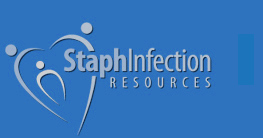Secondary infections are common after having Staph or MRSA. Examples are Candida, yeast and viral infections that show up after your Staph and MRSA infection has ended. One of the most challenging and uncomfortable secondary infections is called C. difficile (or C. diff. for short).
C. diff can be a miserable infection, with loss of bowel control, a burning raw backside, gut cramping and constant frantic trips to the bathroom. Relapses are common with C. diff. and some infections have been fatal.
What is C. difficile?
Clostridium difficile (C. difficile, or C. diff) is a kind of bacterial infection that causes mild diarrhea and inflamed intestines (colitis). The infection is often called Clostridium difficile-associated disease (CDAD) or Clostridium difficile infection (CDI). C. diff bacteria produce a toxin that causes the diarrhea and inflammation in your digestive system.
C. diff. bacteria can form spores to protect themselves. These spores are like a protective armor that C. diff bacteria wear while dormant, allowing them to survive for years. These spores make C. difficile more difficult to treat and easier to transfer to others. C. difficile cannot be treated with standard antibiotics. In fact, like MRSA and Staph, many common antibiotics will make the infection grow worse.
C. diff infections usually happen after taking antibiotics (like Clindamycin). C. diff bacteria can also be transferred from person to person. Because of these spores, it’s even more important to wash your hands well after using the bathroom and before eating or preparing food.
Why does C diff happen? Because antibiotics kill many of your good and “friendly” gut bacteria, leaving room for C. diff to overgrow and cause havoc in your gut.
Symptoms, risk factors and tests
Most doctors diagnose C. difficile by either doing a stool test or by simply looking at your symptoms, medical history and risk factors. Several different laboratory tests are available, but most tests are not 100% accurate.
The most common symptoms include diarrhea, cramps and fever. Other symptoms can be weight loss, nausea, bloody stool and loss of appetite.
Your risks of catching the infection are highest if you’ve recently taken antibiotics or have a history of C. diff. infections. These infections are also more common in the elderly who have been recently hospitalized.
Controlling C. difficile
Most antibiotics will not help with C. diff. Vancomycin (Vancocin) and metronidazole (Flagyl) are the only two drugs commonly prescribed by most medical doctors. A gastroenterologist is often recommended because they specialize in treating illnesses of the gut.
An important way to help control C. diff. is with good hygiene and cleaning. Because the spores are so tough, most cleaners and disinfectants are not very effective at killing C. diff.
As with Staph and MRSA, there are natural antibiotics and methods that can have good results with C. difficile. Probiotics are important to help re-balance the intestinal flora. Medicinal herbal remedies, antibacterial essential oils (such as oregano oil) and biofiom targeting products have also shown good results. Diet changes, especially limiting carbohydrates, sugar and refined foods, can also help significantly.
Much of the principles we cover in natural MRSA guidebook are helpful for C. diff, as are some of our favorite remedies, but it often requires a more targeted approach for the intestines. If you have additional questions about C. diff, you can contact us here.
Take care,
Michelle
Microbiologist and Natural Health Expert
Author of the Natural MRSA and Staph Treatment and Prevention Guidebook MRSA Secrets Revealed




